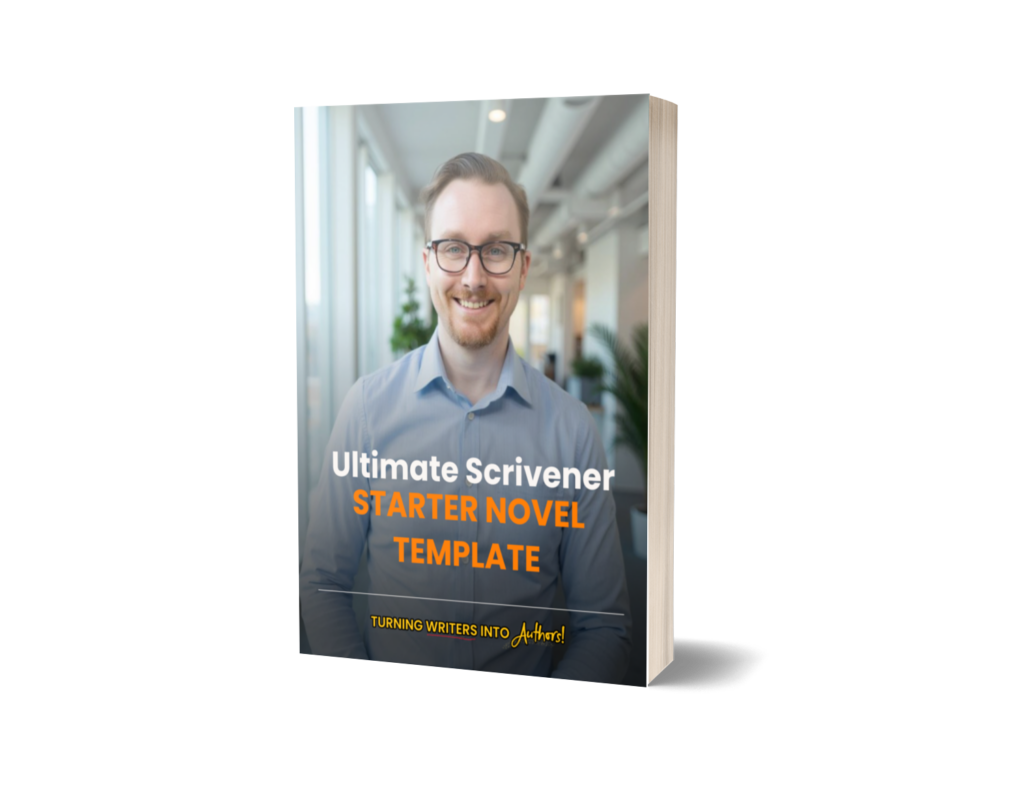Do you have a story inside ofyou that’s just waiting to be told? Whether it’s a fantasy novel, a romance, or a thriller, today we’re going to learn how to brainstorm and outline your story using the 4 pillars of storytelling. These pillars are character, setting, plot, and conflict. Conflict is the glue that holds it all together and is essential for any good story. With Scapple, you can draw connections between characters, settings, and plots to create conflicts between them. Join me as I brainstorm ideas for our next great fantasy novel!
Pillar #1: Create Compelling Characters
Your story will be nothing without a compelling protagonist and thriving cast of characters that your readers can invest in. If your readers don’t care about your characters, particularly your protagonist, then they won’t care about your story. It’s really that simple.
Your characters are the lens through which readers experience your world, your plot, and its conflicts! If you have flat and uninteresting characters, you’re going to lose your readers before they even finish chapter one.
The first step is to come up with your characters, To do this, we’ll use a brainstorming technique called visual association. Visual association is when you take a word or phrase and think of an image that represents it. For example, if I said the word “home,” you might think of a warm, cozy house. Or if I said the word “love,” you might think of a heart.

To brainstorm characters for our fantasy novel, we’ll start by coming up with a list of character archetypes. An archetype is a type of character that appears in many stories. Some examples of archetypes are the hero, the villain, the love interest, the sidekick, and the mentor.
Now that we have our list of archetypes, we’re ready to begin using visual association to brainstorm our characters. For each archetype, we’ll think of an image that represents that character.
For our hero, we might think of a brave knight slaying a dragon. For our villain, we might think of an evil sorcerer casting a spell. For our love interest, we might think of a beautiful princess. And for our sidekick, we might think of a comical jester.
Once we have our images in mind, we’ll start fleshing out our characters. For our hero, we might come up with the following:
- A brave knight who slays dragons
- A skilled archer who protects his village from bandits
- A courageous thief who robs the rich to feed the poor.
Remember the goal here is to come up with as many ideas as possible. No idea is wrong, and there are no wrong answers. So don’t be afraid to think outside the box!
Creating “ORIGINAL” content
You might have noticed that I started with stereotypical fantasy archetypes. Knights, archers, and thieves are exactly new material. The thief and archer both totally scream, “ROBIN HOOD!”
For starters, I want to point out that if you want to write another “Robin Hood” style story go for it! You should enjoy whatever it is that you’re writing. Just bear in mind your story may come across to some readers as unoriginal.
My second, and final point, is that there’s no such thing as “original” content. Scream at me all you want. The same themes are recycled again and again in all stories.
Although not every novel covers every conceivable theme, all great stories touch on themes that we can relate to. The reason being is that as human beings we experience similar events and feel similar emotions, even though our individual stories are wildly different from each other.

Originality is the holy grail. You won’t find it, and you’ll wind up with a lousy manuscript as a result. Instead, let’s change the word “original” to “fresh.”
Why? Because fresh content is totally possible! How do you make your content fresh? You take those same old archetypes and put new twists on them. It’s all in the execution!
In fantasy, we take the same themes, but with a new setting, magic system, characters, and plot. But where do these innovative Ideas come from? Brainstorming is a great way to get all the bad ideas out to make room for the fresh ones. Don’t stress out about the crafting perfect characters. It’s fine to start with preconceptions; you might be surprised at what you discover if you keep researching.
So, to recap. There are no original ideas, only fresh ones. And you make your ideas fresh by putting new spins on old concepts.
When you’re finished brainstorming, you should have a list of interesting and unique characters that you can use in your novel. And by using visual association, you’ll find it easier to remember your character’s backstories and motivations. So get started!
Pillar #2: Plotting with “What-if” Questions
If you’re anything like me, when you start planning a new story, you either have a million ideas buzzing around in your head, or an empty slate with nothing but a blank page staring back at you. Regardless of your predicament, it can be tough to zero in on the ideas that are going to be the best fit for your story. That’s where “what if” questions come in.
By asking yourself what-if questions about your story idea, you can quickly and easily brainstorm all sorts of possibilities for where your story could go. And the best part is, there are no wrong answers!
Here are a few examples of what-if questions you could ask about your fantasy story idea:
- What if the main character discovers they have magical powers?
- What if the kingdom is threatened by an evil wizard?
- What if there is a prophecy that says the main character is destined to save the world?
- What if the main character has to go on a quest to find a lost artifact?
By asking yourself these kinds of questions, you can start to narrow down the possibilities for your story and determine which direction you want it to go.
Pillar #3: Worldbuilding with Word Storms
As you know, worldbuilding is vital to creating a believable and compelling fantasy landscape.
One way to brainstorm ideas for your world is to do a word storm.
To do a word storm, start by writing down a list of keywords related to your story. For example, if you’re writing a story about a magical kingdom, you might want to include words like “magic,” “castle,” “wizard,” and “dragon.”
Then, set a timer for five minutes and free-write about those words, coming up with as many ideas as you can.
Don’t worry about whether or not the ideas are good, just get them down on paper.
Once the timer goes off, take a look at your list and see if any patterns or themes emerge.
You can then use those patterns to start developing a more detailed picture of your world.
For example, if you notice that a lot of your ideas revolve around the idea of metal, you might want to consider making metal a key element in your story.
Maybe there’s a magic metal that can only be found in your kingdom, or maybe the kingdom is plagued by diamond rain (which sounds pretty cool, if you ask me).
Either way, by brainstorming with word storms, you can start to flesh out the details of your world.
Pillar 4: Conflict—The Narrative Glue
Conflict is the engine that drives all good stories. It is what makes us turn the page, eagerly anticipating what will happen next. Good conflict should be exciting and interesting, but most importantly, it should be believable.
One of the best ways to brainstorm conflicts for your story is to use a technique called associative brainstorming. This simply means coming up with ideas by association—in other words, brainstorming one idea and then allowing your mind to wander to related ideas.
For example, let’s say you’re brainstorming ideas for a fantasy novel about a young woman who discovers she has magical powers. To get started, you might come up with a list of possible conflicts:
- The young woman discovers she has magical powers and must learn to control them.
- She must keep her powers a secret from everyone, including her closest friends and family.
- She must battle evil forces who want to use her powers for their own nefarious purposes.
- She must come to terms with her new identity as a magical being.

As you can see, each of these ideas is related to the others, and each one could be developed into an exciting conflict for your story.
When brainstorming conflicts, it’s also important to think about raising the stakes. In other words, what will happen if your protagonist fails to overcome the conflict? The stakes should be high enough that failure is not an option—otherwise, your story will be boring.
For example, in the conflict above, if the young woman fails to control her powers, she could be captured by evil forces and used as a weapon against her friends and family. Or, she could accidentally reveal her powers to someone who would then expose her to the world, leading to a life of secrecy and isolation.
As you can see, conflict is an essential ingredient in any good story. By brainstorming conflicts using the associative technique, you can ensure that your story will be exciting, interesting, and believable.
Creating compelling characters, plotting with “what if” questions, worldbuilding with word storms, and brainstorming conflicts are all essential steps in creating a well-rounded and believable story. By using these techniques, you can ensure that your story has the necessary ingredients to keep readers engaged until the very end. What’s your favorite technique for brainstorming story ideas? Let us know in the comments!
